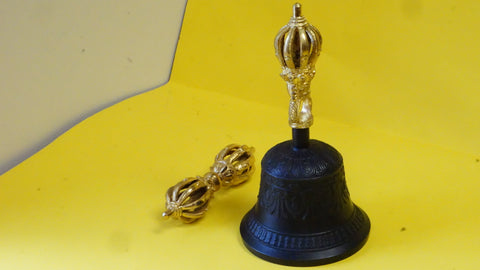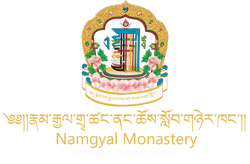Small Ghanta and Vajra (Bells and Dorje)
Couldn't load pickup availability
Literally, each time we meditate with the Bell and Dorje we are engaging with a symbolic compendium of teachings of the Buddha. At the highest level, the very face of Wisdom Pranjna Paramita appears on the handle of the Bell.
In our hands, the Dorje is Yidam: compassion and method—representing the five male perfections; the Bell is Mandala: the entire wisdom Mandala and representing the female perfection of wisdom.
We cradle in our hands the deity, and the entire mandala of the deity, embodied in the subtleties of the symbols, or the entire universe itself—wonderful offerings for our practice. We touch the five Dhyani Buddhas and their wondrous wisdom consorts. We also directly connect to the eight great bodhisattvas and their consorts. The eight auspicious symbols, the lotus throne, the moon disc, and a complex array of symbols perfectly adorn these small, vital implements. And, importantly, we generate the emptiness of sound, a sound that reaches out to our inner Buddha with the sound of Wisdom, and calls on the deities.
HOW TO USE IT
The vajra and bell are often seen represented in the hands of deities in art, and in practice are held in the hands of the monks during rituals, the vajra in the right hand, the bell in the left. They are moved in prescribed movements. When the arms are crossed this symbolizes that the two are united—representing enlightenment. The sound of the bell is considered by Tibetan Buddhists as the most beautiful music. This music is presented as one of eight offerings to the deity that is invoked during the ritual.




